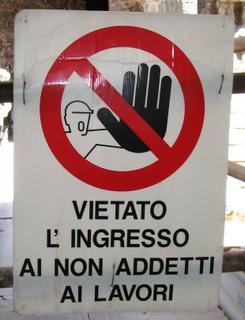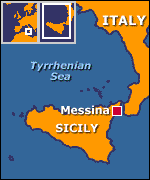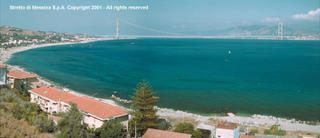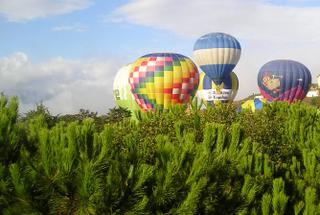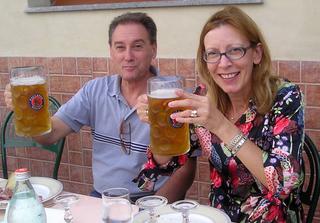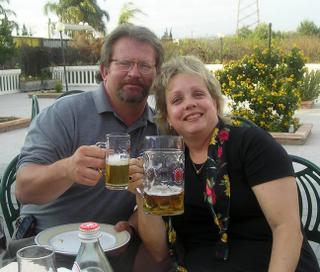Earthquakes and Volcanoes
At 1:00 A.M. today, I was awakened and nearly shaken out of bed by an earthquake (which is terremoto in Italian). It only lasted about five seconds, but it shook the house, rattled the dishes, and made my heart pound. I jumped out of bed, but it stopped and there was nothing else to do. Only the day before, Sunday morning, we had three tremors, the third being pretty strong, too. Since the houses are all made of cement, they don't move, usually.
I found out today that these were "little" earthquakes of 3.9 and 3.7, but the epicenter was only six kilometers or so away. That's a bit frightening, especially when you consider I'm ALSO ON A LIVE VOLCANO!! I'm not quite sure how the two react together, but I also don't want to find out the hard way.
Sicily has pretty much been destroyed in every quarter by earthquakes and volcanic eruptions over the centuries.
I found an awesome website that tracks every single reported earthquake activity in the world 24/7. You just have to scroll down and find Sicily on 10/31 and 10/30 and you get maps a a short, detailed seismological report like this:
Event reported by INGV
Content-Length: 1065
Istituto Nazionale di Geofisica e Vulcanologia
Centro Nazionale Terremoti, Sorveglianza Sismica
Via di Vigna Murata 605, 00143, Roma, Italy
PRELIMINARY LOCATION:
Event Number: 17477
Origin time (UTC): 31 ott 2005 00:02:00
Origin time (Local): 31 ott 2005 01:02:00
Ml: 3.9
Latitude: 37.63
Longitude: 15.06
Profondità: 8.6
Region: Etna
Provinces: CATANIA
Closest towns: PEDARA TRECASTAGNI<3Km NICOLOSI VIAGRANDE Aci Bonaccorsi<6Km TREMESTIERI ETNEO MASCALUCIA SAN GIOVANNI LA PUNTA ACI SANT''ANTONIO San Pietro Clarenza GRAVINA DI CATANIA ACI CATENA VALVERDE ZAFGERANA ETNEA SANT''AGATA LI BATTIATI BELPASSO SAN GREGORIO DI CATANIA Camporotondo Etneo<9Km SANTA VENERINA ACIREALE
Map: http://www.ingv.it/%7eroma/webterrNew/giorni/giorno_strutt.php?giorno_f=31102005000200
UTC: Greenwich time.
Closest towns:
- the towns are listed in order of distance from the epicenter (es. Roma<3Km, Roma within 3 Km from the epicenter)
- the names of towns with more then 5000 inhabitants are in capital letters.
So, I can see that I was the second closest town (Nicolosi) to the epicenter. I'm thinking I need a plan in case something serious happens . . .

